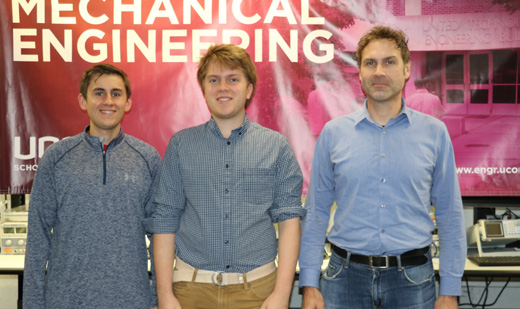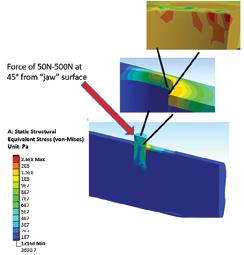
Figure 1

Figure 2

Mechanical Engineering
Team 62
Team Members |
Faculty Advisor |
Carmen Ciardiello |
David M. Pierce Sponsor Windham Dental |
sponsored by

A typical dental implant takes approximately four to six months to undergo complete osseointegration. With correct physiological parameters (bite force, mandibular Young’s modulus, mandibular cortical bone thickness, and implant diameter) immediate dental implants are a viable solution to this problem. Our objective is to build upon work done by previous senior design teams and build a mathematical model that uses patient-specific input values and can predict whether immediate dental implant loading is safe. Our mathematical model is built off data generated from finite element simulations of simplified mandibular models. We used data from these simulations is to build a formula. In this process we discovered that the output of the formula developed by previous senior design is based entirely on the implant diameter. Our analysis pointed to the factors mentioned above as important to determining implant failure, with bite force showing an especially meaningful p value. We validated the model with higher-fidelity geometries derived from patient CT-scans. By validating the mathematical model with the more robust mandible geometries, we can by more confident in the model’s output and predictive power and in turn safely determine whether or not a patient is eligible for immediate dental implant loading.
